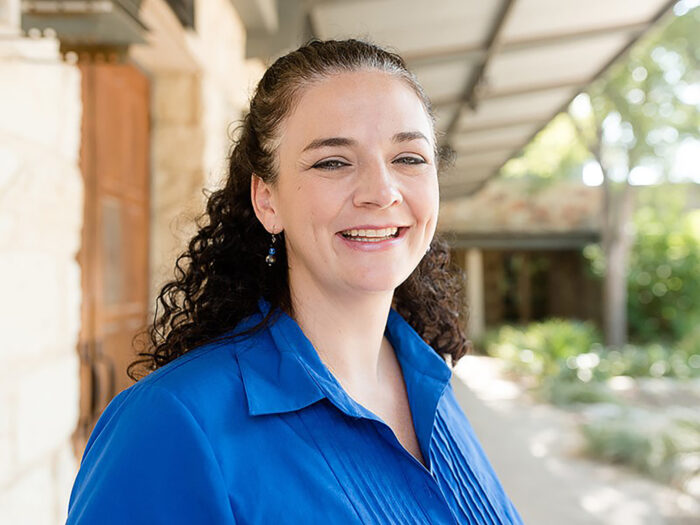The Texas Heart Institute and The University of Texas at Austin Awarded a National Institutes of Health Grant to Develop Injectable Hydrogel Electrodes to Prevent Ventricular Arrhythmias

HOUSTON, TX, May 4, 2023 – The Texas Heart Institute and The University of Texas at Austin received a four-year, $2.37 million grant from the National Heart, Lung, and Blood Institute to develop a novel method of managing ventricular arrhythmias, which cause sudden cardiac death. The research initiative is the brainchild of Dr. Elizabeth Cosgriff-Hernandez, Professor of the Department of Biomedical Engineering, Cockrell School of Engineering at The University of Texas at Austin, an expert in biomaterial scaffold engineering for tissue repair and regeneration and electrophysiology medical device pioneer and clinician Dr. Mehdi Razavi, Director of Electrophysiology Clinical Research & Innovations at The Institute. The grant will fund the development of conductive, injectable hydrogel electrodes to prevent and manage ventricular arrhythmias.
Ventricular arrhythmias are potentially life-threatening heart rhythm disorders that originate in the lower chambers of the heart. The underlying electrophysiological imbalance responsible for the development of ventricular arrhythmias is delayed conduction in scarred or diseased heart tissue, according to Dr. Razavi. This type of scarring can be caused by a heart attack (or myocardial infarction), for example.
“We identified an unmet need to deliver electrical signals across these problematic scars in the heart, and unfortunately the leads that are currently available can only be threaded through larger vessels. We envisioned using hydrogels injected into the small vessels that cross over scarred regions of the heart to propagate electrical currents and more effectively pace the heart,” stated Dr. Razavi.
The interdisciplinary research team—comprising electrophysiology researchers led by Dr. Razavi and their close collaborators in Dr. Cosgriff-Hernandez’s biomaterial innovations group—has already demonstrated the feasibility of pacing the heart using the hydrogel in a porcine model.
Building upon the initial proof-of-concept of pacing myocardium (heart muscle) with a hydrogel that cures inside the body, the team will now develop a combined material and delivery system that can interface with existing pacemaker technology to expand its capability in treating ventricular arrhythmias.
The two research teams will work closely to assess the injectable hydrogel’s safety, function, and durability in benchtop testing and in a porcine model and develop a transcutaneous catheter delivery system for the novel hydrogel.

Dr. Elizabeth Cosgriff-Hernandez, Professor of the Department of Biomedical Engineering, Cockrell School of Engineering at The University of Texas at Austin
Using a myocardial infarction porcine model, the team will evaluate the use of hydrogel to restore conduction across scars to reduce ventricular arrhythmias and implantable cardioverter defibrillator shocks. Such confirmation of increased activation compared to standard-of-care single-point pacing could validate the efficacy of this innovative approach to eliminate the conduction delay in scarred myocardium, which leads to lethal ventricular arrhythmias.
“Stimulating vast areas of the heart through planar wavefront propagation could introduce an entirely new cardiac resynchronization therapy, and ultimately alter the landscape of cardiac rhythm management through a new platform for painless ventricular defibrillation,” added Dr. Razavi.
The grant will enable the team to conduct studies in a post-myocardial infarction model to demonstrate that hydrogel electrode pacing reduces the frequency of ventricular arrhythmias and defibrillation shocks.
“Our clinician-engineer partnership provided critical insights from both medicine and material science to guide how we designed and tested the injectable hydrogel electrode. It is this integrated approach to medical device innovation that enabled the development of a unique technology that can transform how we treat ventricular arrhythmias and improve patient outcomes,” said Dr. Cosgriff-Hernandez.
The research described above is supported by the National Heart, Lung, and Blood Institute of the National Institutes of Health under Award Number R01HL162741. The content is solely the responsibility of the authors and does not necessarily represent the official views of the National Institutes of Health.
###
About The Texas Heart Institute
The Texas Heart Institute is an independent, nonprofit organization that is improving cardiovascular health through trailblazing research, thought leadership, education, and patient care. Located within the Texas Medical Center in Houston, Texas, and founded in 1962 by renowned cardiac surgeon Dr. Denton Cooley, The Texas Heart Institute performed the first successful heart transplant and total artificial heart implant in the United States. Since then, our physicians and surgeons remain recognized as worldwide leaders in the diagnosis and treatment of even the most complex cardiovascular conditions. Research programs at The Texas Heart Institute continue to push the boundaries of cardiovascular science by translating laboratory discovery to patient care. The Texas Heart Institute has been ranked among the top cardiovascular centers in the United States by U.S. News & World Report for more than 30 years. www.texasheart.org @texasheartinstitute
About The University of Texas at Austin
The University of Texas at Austin, founded in 1883, ranks among the 40 best universities in the world, and top 10 among U.S. public universities. UT Austin is a bold, ambitious leader supporting some 52,000 diverse students, 3,000 teaching faculty, and top national programs across 18 colleges and schools. As Texas’ leading research university, UT attracts more than $650 million annually for discovery. Amid the backdrop of Austin, Texas, a city recognized for its creative and entrepreneurial spirit, the university provides a place to explore countless opportunities for tomorrow’s artists, scientists, athletes, doctors, entrepreneurs and engineers. www.utexas.edu
Feature Photo: Allison Post, PhD; Mehdi Razavi, MD; and Lukas Jaworski




